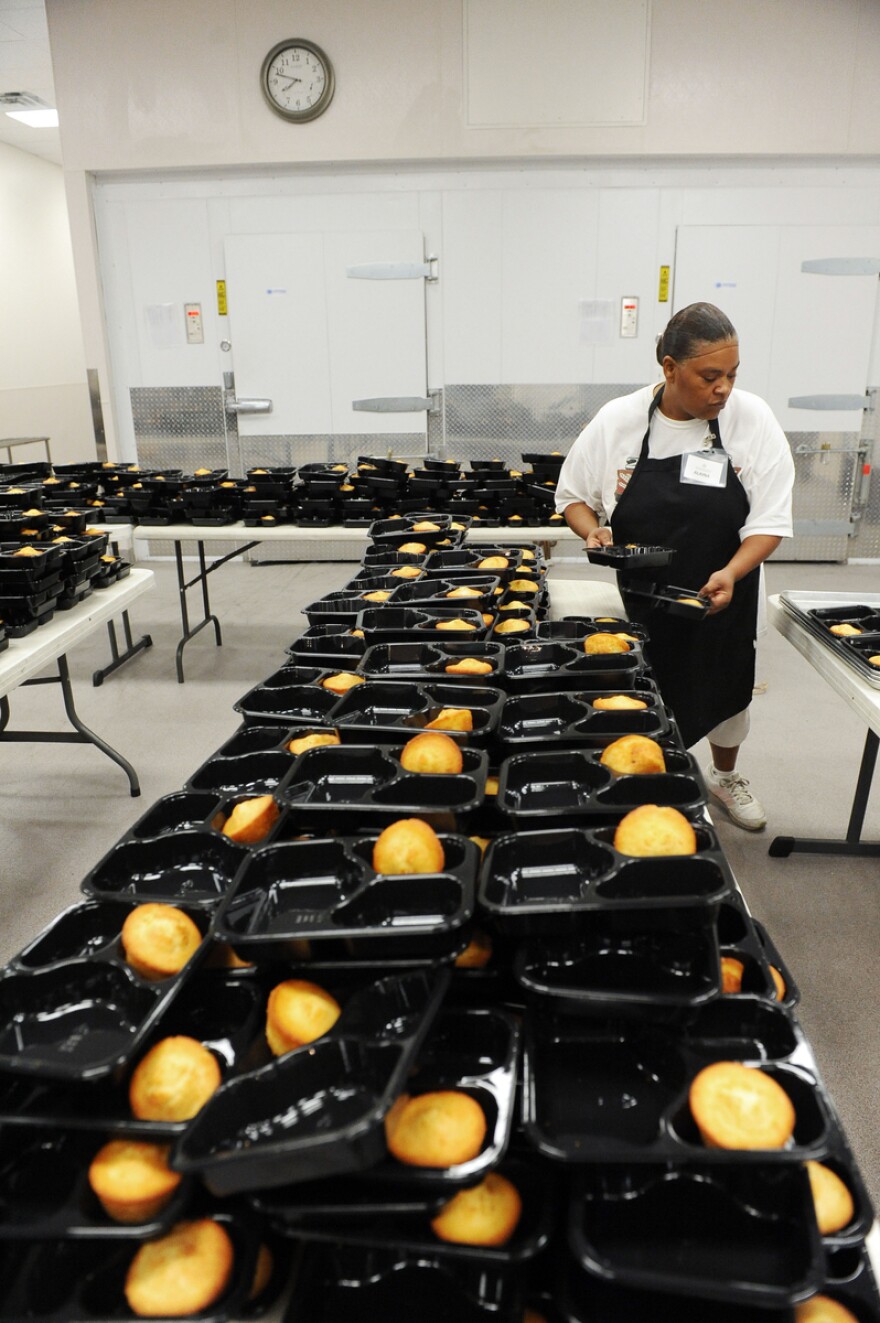As school days get longer and family budgets grow tighter, more students are eating all three meals — breakfast, lunch, and dinner — at school.
It's dinnertime at the International School of Louisiana. Students take their seats at round cafeteria tables and wait to get called up for dinner. These students are enrolled in an after-school program run by the non-profit Community Works. The program offers activities like puppet making and dance; it also offers hot meals. One-by-one, students come up and receive trays full of food.
About 70 students participate in the dinner program here. They're among a growing number of students who are eating all three meals at school. In 2010, the Healthy, Hunger Free Kids Act opened up federal funding for school dinners. Since then, more than 45 New Orleans area schools and after-school programs have started offering dinner, reaching thousands of students.
Many school dinners are prepared in the Second Harvest Food Bank Community Kitchen. Right now, staff and volunteers are hard at work assembling and packing up meals. They scoop food onto biodegradable trays, slide those trays through a sealing machine, and pack them up in insulated bags. Trucks deliver the meals across New Orleans, where they're distributed by after-school programs.
Natalie Jayroe is president and CEO of Second Harvest Food Bank. She says that through the federally subsidized dinner program, Second Harvest can reach more children at school. Currently, the Second Harvest Kids Cafe program provides 1,300 meals to 26 after-school programs. “The schools don't have to pay for it, the after-school programs don't have to pay for it, and most importantly the children don't have to pay for it,” Jayroe says.
To get the federal dinner subsidies, schools must have at least half their students qualify for free or reduced-price lunch. Every school district in the area meets that benchmark, including 82% of New Orleans public school students, and Jayroe says the number of hungry children is rising.

“We used to see people coming to food banks for assistance occasionally, as an emergency,” she says. “More and more we're finding families that are coming to us every single month, just as a normal part of their food budget, because it's so hard for them to make things work.”
Schools and after-school programs aren't just serving dinner to ease financial stress for families. As more New Orleans schools shift to longer days, many students are simply still in school during dinnertime.
“Most of the time a child is getting on the bus at 6–6:30 in the morning, and generally is not getting home 'til around that same time at night,” says James Graham, director of the Healthy School Food Collaborative. “So that breakfast, that snack — lunch and supper now — that time period is all happening during the course of school.”
Graham manages the food service program at 35 charter schools, and says about half those schools serve dinner. These dinners come through the food service providers that sell schools breakfast and lunch, companies like Sodexho, Chartwells and Revolution Foods. They range from a sandwich and piece of fruit — eaten quickly in the classroom — to a full, sit-down meal.
The key, Graham says, is serving healthy, nourishing food. “We wanted to make sure if a child was going to be in the school environment from sunrise to the end of the day that we're feeding them nutritious food to keep them alert and active and hopefully ensure academic success,” he says.
Back at the International School, students are enjoying their dinner. Tonight's meal includes corn, chicken, greens, macaroni and cheese and a biscuit. Diane Goodman-Daniel substitute teaches art classes here. Her daughter, Sadie, is also in the dinner program. She says that access to healthy, consistent meals is critical for students' well-being. “I know that this one, if she misses a snack or a meal, she turns mean,” Goodman-Daniel says.
Sadie chimes in: “Seriously mean.”
“The point being, these kids need food,” Goodman-Daniel says.
Goodman-Daniel hopes the dinner service continues and expands, but does point out that the more students eat at school, the less time they're eating with family at home.
Support for education reporting on WWNO comes from Baptist Community Ministries and Entergy Corporation.



